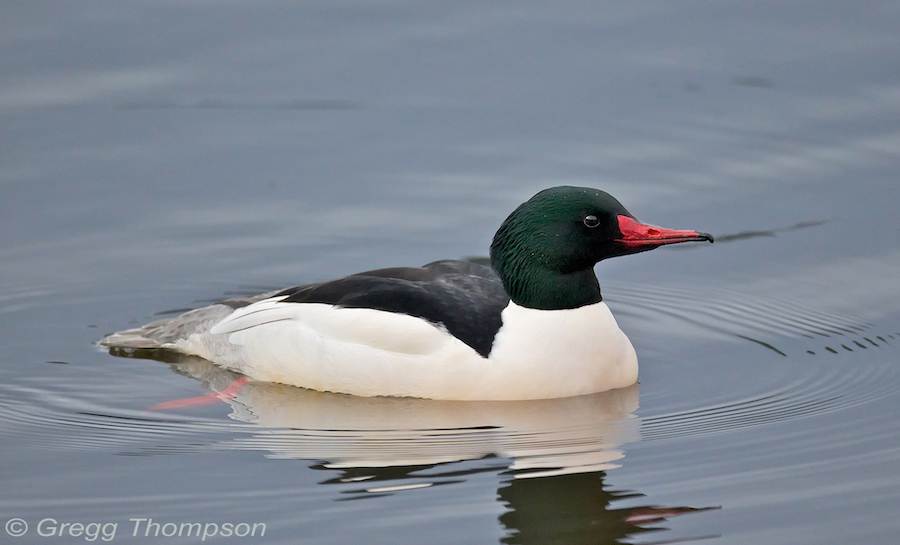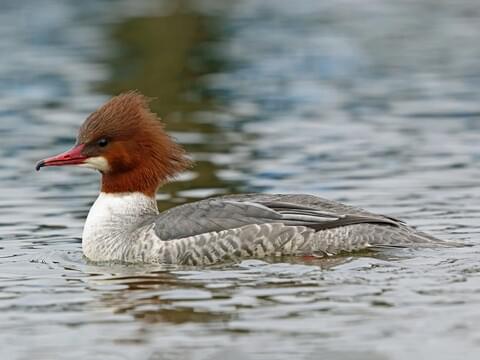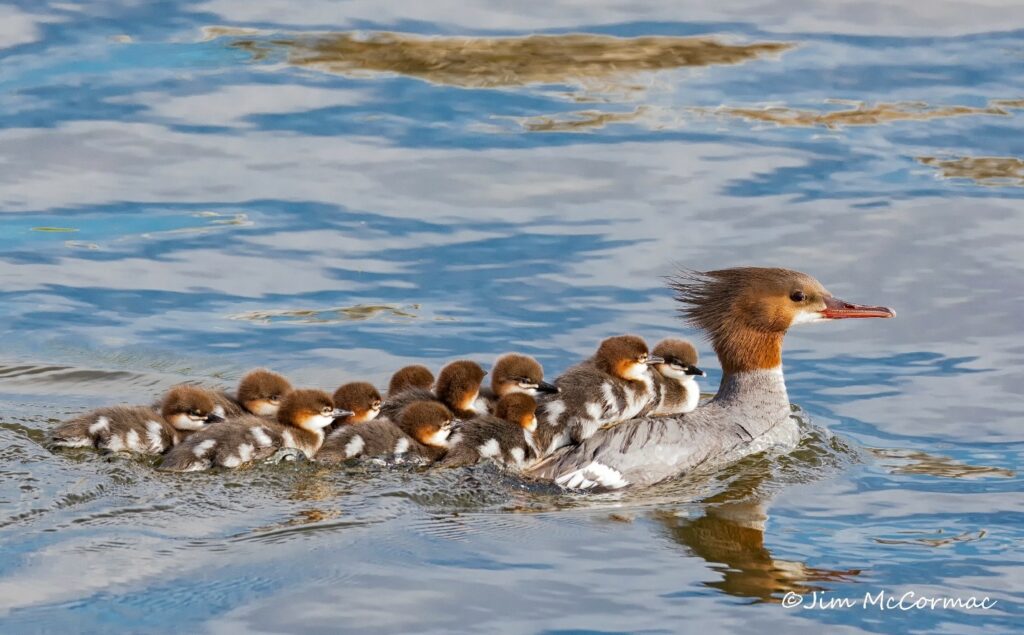07/29/23 As someone who grew up in an area that only had mallards, swans, and geese, I was confused by the name “Sawbill” when I first visited the outfitters many years ago. I might be willing to bet others had the same question pass through their heads as well, “What is a Sawbill”?
Sawbills, more commonly known as the common merganser, are a species of merganser found in a number of places around the world. The taxonomic name for the common merganser is Mergus merganser. First century Roman authors used mergus as a catch-all term for unspecified waterbird, and merganser is a combination of mergus and anser, which is Latin for goose. There are three subspecies of the common merganser. The first one, M. m merganser, is found in northern Europe and Northern Asiatic Russia. The next one is M. m orientalis, found in the mountains of Central Asia. Finally, the one we are the most familiar with, M. m americanus. This subspecies is found throughout much of the US and into the lower 2/3rds of Canada.


The sawbill’s main diet is fish. They dive to catch fish with bills that have serrated edges to help hold on to their slippery meals. The serrated bill is where they get the nickname, “Sawbills”. Mergansers feed on other aquatic creatures like mollusks, crustaceans, and amphibians. If you ever notice a merganser with white feathers that are ever so slightly tinged pink, it is due to carotenoids, a pigment that can be found in some crustaceans and fish.
Starting in May and going through July, female mergansers will lay between 9-12 eggs. Nesting usually occurs in tree cavities. In some places, like in the Asiatic mountains, where it is devoid of trees, they will use holes on cliffs and steep riverbanks. After hatching, the mother will take each duckling to the water by her bill. Sawbills are known to form crèches, where one female will look after up to 70 ducklings at one time. Other animals that do this are lions, penguins, and another seabird, the common eider. Many mergansers move to areas that will have open water throughout the winter, though in areas that have milder winters, like California, they are year round residents.
I hope you enjoyed learning more about the wonderful creature that is the common merganser. I always enjoy watching these beautiful birds when I’m out in the wilderness.
Sawyer

